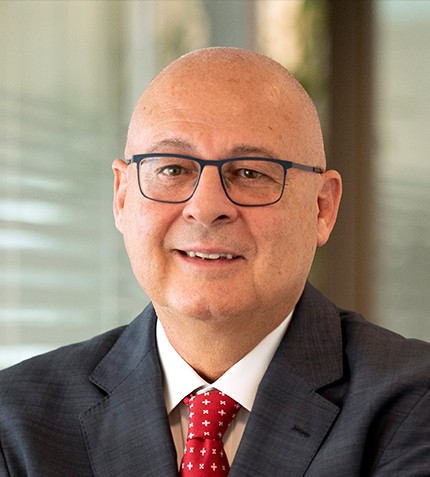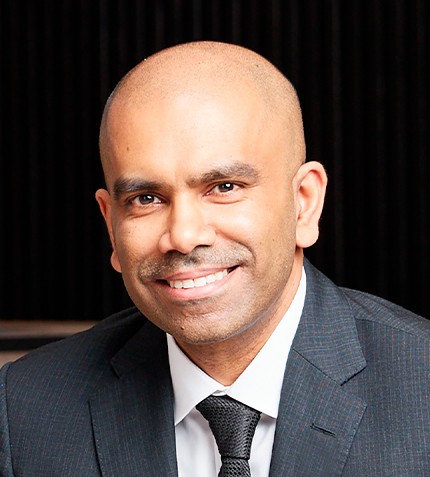
"AngloGold Ashanti continues to work hard for results in its operational units Brazil, focused on sustainable mining. More than R$1 billion will be invested this year and more than 3,500 direct jobs created."
Othon Maia
VICE PRESIDENT OF CORPORATE AFFAIRS AND SUSTAINABILITY, ANGLOGOLD ASHANTI
Can you introduce AngloGold Ashanti?
AngloGold Ashanti is one of the largest gold producers operating in Brazil. In addition to gold production, the company is active in energy generation for internal operations, real estate management, and sulfuric acid production. AngloGold Ashanti has gold mines and metallurgical and processing plants in the states of Minas Gerais and Goiás.
In 2022, AngloGold Ashanti produced 399,000 oz of gold.
What are AngloGold Ashanti’s ESG strategies?
We achieved two major milestones in 2022: First, we reached 100% dry waste disposal, and second, we achieved a 33% reduction in carbon emissions. The latter was originally scheduled for 2030, and was achieved significantly ahead of schedule. To reach this milestone, we have transitioned to 100% consumption of electrical energy from certified renewable sources. AngloGold Ashanti will continue this work by eliminating scope 1 and 2 carbon emissions by 2050.
AngloGold Ashanti has also invested in the automation of mine infrastructure equipment (pumping and ventilation) and our diesel generation plant. Additionally, we have implemented underground water recirculation systems, optimized refrigeration plants, replaced air compressors with more efficient models, and improved our energy monitoring and management system.
In 2022, AngloGold Ashanti invested approximately R$18 million in actions related to environmental management, and the company preserves 11,000 hectares of nature.
Can you discuss AngloGold Ashanti’s approach to tailings management?
All of our dams have received stability condition statements issued by an external auditor. The structures are also included in the Integrated Mining Dam Management System (SIGBM) of the National Mining Agency (ANM). Our dams are monitored daily by a specialized AngloGold Ashanti team that checks the condition of the structure and assesses the water level and the functioning of the drainage system, ensuring that no incident occurs.
How does AngloGold Ashanti utilize advanced technology?
AngloGold Ashanti was the first to use underground telemetry, a remote equipment monitoring system that predicts the need for machine maintenance. We also have a People Tracking system which monitors people and equipment underground; remote detonation via Wi-Fi, autonomous drilling that reduces the need for underground labor; semi-autonomous loaders; intelligent ventilation systems; and 3D technologies, among other innovations.
Can you describe AngloGold Ashanti’s approach to safety?
In 2022, the company strengthened the Critical Risk Management (MHCS) procedures, evolving the controls and monitoring of management indicators, promoting actions and training aimed at raising awareness and individual accountability among employees.
Some of the measures taken to avoid accidents include the use of teleremote operated equipment in the mine; the implementation of an automatic fire fighting system, and the implementation of a people tracking system at the Cuiabá mine, which connects to more than 400 Wi-Fi points in the underground mine to locate people and equipment in real time. AngloGold Ashanti offers leadership training through the ABC Methodology (focus on behavior) which is applied to change safety-related behaviors. Additionally, we apply CCV (Critical Control Verification), an activity carried out in the field in which people who go to work check whether the critical risk assumptions are in compliance.
These measures have already shown positive results, as demonstrated by accident data which has fallen year after year. Compared to 2020, the accident rate in 2022 was reduced by 40.6%. In relation to 2021, the drop was 36.7%.
What is your perspective on gold pricing?
The gold market has reached high price levels recently, compared to historic prices. It reached more than US$2,000/oz. This rise is due to sustained and significant interest from investors, which has made the metal one of the most attractive assets on the planet.
What are the strategic objectives of AngloGold Ashanti?
AngloGold Ashanti remains focused on business longevity, centering the best elements of its 189-year history and anchoring operations in current best practices to maintain a responsible gold management and ESG strategy.
In September 2023, the London Bullion Market (LBMA) endorsed gold refined by AngloGold Ashanti. The company’s refinery is annually audited by the LBMA, which is the main independent authority for precious metals. LBMA’s Responsible Gold Sourcing Program protects the integrity of the global supply chain.
AngloGold Ashanti continues to work hard for results in its operational units Brazil, focused on sustainable mining. In total, more than R$1 billion will be invested this year and more than 3,500 direct jobs created.










